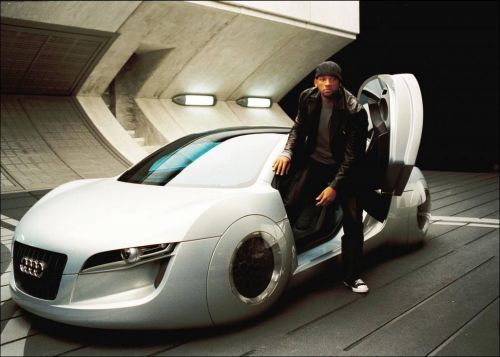The former Audi factory in Zwickau restarted assembly of the pre-war-models in 1949. These DKW models were renamed to IFA F8 and IFA F9 and were similar to the West German versions. West and East German models were equipped with the traditional and renowned DKW A new West German headquartered Auto Union was launched in Ingolstadt, Bavaria with loans from the Bavarian state government and Marshall Plan aid.[12] The reformed company was launched 3 September 1949 and continued DKW's tradition of producing front-wheel drive vehicles with two-stroke engines.[10] This included production of a small but sturdy 125 cc motorcycle and a DKW delivery van, the DKW F 89 L at Ingolstadt. The Ingolstadt site was large, consisting of an extensive complex of formerly military buildings which was suitable for administration as well as vehicle warehousing and distribution, but at this stage there was at Ingolstadt no dedicated plant suitable for mass production of automobiles: for manufacturing the company's first post-war mass-market passenger car plant capacity in Düsseldorf was rented from Rheinmetall-Borsig. It was only ten years later, after the company had attracted an investor that funds became available for construction of major car plant at the Ingolstadt head
In 1958 Daimler-Benz took an 87% holding in the Auto Union company, and this was increased to a 100% holding in 1959. However, small two-stroke cars were not the focus of the company's interests, and while the early 1960s saw major investment in new Mercedes models and in a state of the art factory for Auto Union's, the company's aging model range at this time did not benefit from the economic boom of the early 1960s to the same extent as competitor manufacturers such as Volkswagen and Opel. The decision to dispose of the Auto Union business was based on its lack of profitability.[13] Ironically, by the time they sold the business it also included a large new factory and near production-ready modern four-stroke engine, which would enable the Auto Union business, under a new owner and with the benefit of a rediscovered name, Audi.In 1964 Volkswagen acquired a 50% holding in the business, which included the new factory in Ingolstadt and the trademark rights of the Auto Union. Eighteen months later, Volkswagen bought complete control of Ingolstadt, and by 1966 were using the spare capacity of the Ingolstadt plant to assemble an additional 60,000 Volkswagen Beetles per year.[14] Two-stroke engines became less popular during the 1960s as customers were more attracted to the smoother four-stroke engines. In September 1965, the DKW F102 was fitted with a four-stroke engine and a facelift for car's the front and rear. Volkswagen dumped the DKW brand because of its associations with two-stroke technology, and having classified the
 audi
audi audi
audi audi
audi audi
audi audi
audi audi
audi audi
audi audi
audi







No comments:
Post a Comment